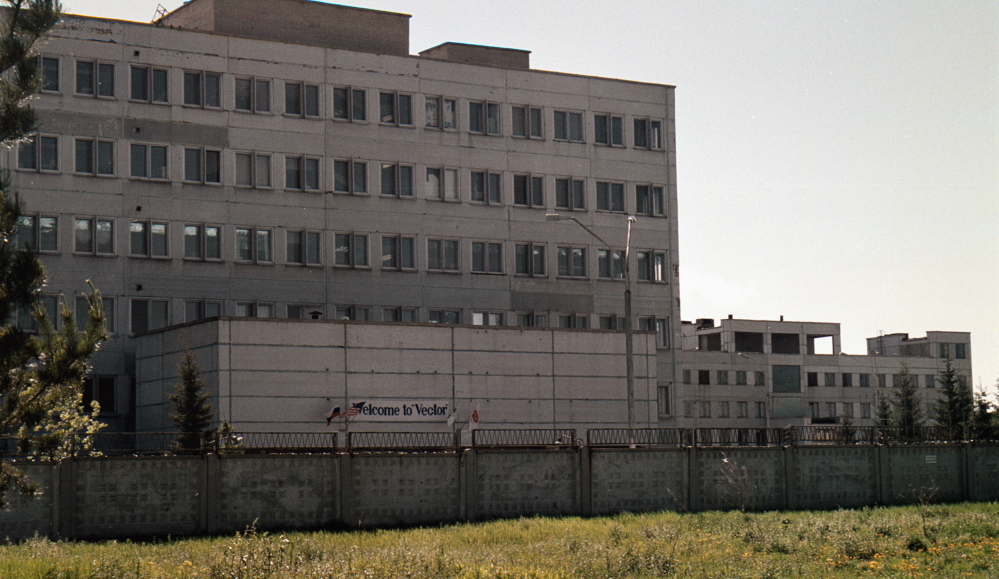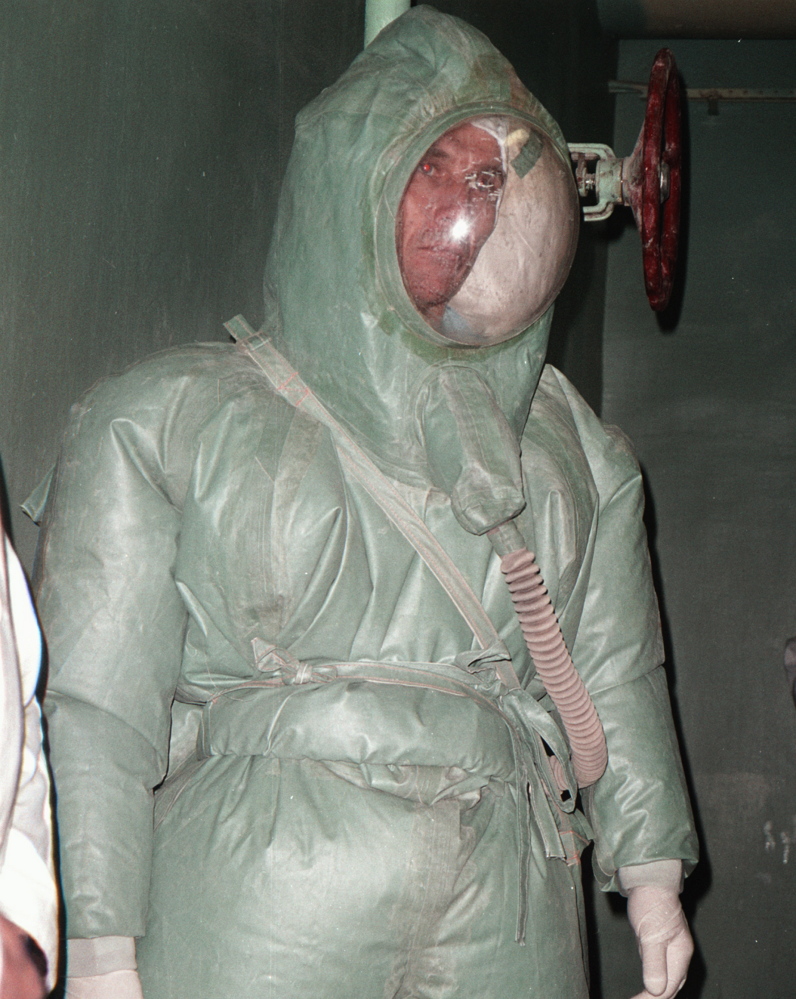She was an ordinary lab technician with an uncommonly dangerous assignment: drawing blood from Ebola-infected animals in a secret military laboratory. When she cut herself at work one day, she decided to keep quiet, fearing she’d be in trouble. Then the illness struck.
“By the time she turned to a doctor for help, it was too late,” one of her overseers, a former bioweapons scientist, said of the accident years afterward. The woman died quickly and was buried, according to one account, in a “sack filled with calcium hypochlorite,” or powdered bleach.
The 1996 incident might have been forgotten except for the pathogen involved – a highly lethal strain of Ebola virus – and where the incident occurred: inside a restricted Russian military lab that was once part of the Soviet Union’s biological weapons program. Years ago, the same facility in the Moscow suburb of Sergiev Posad cultivated microbes for use as tools of war. Today, much of what goes on in the lab remains unknown.
The fatal lab accident, and a similar one in 2004, offer a rare glimpse into a 35-year history of Soviet and Russian interest in the Ebola virus. The research began amid intense secrecy with an ambitious effort to assess Ebola’s potential as a biological weapon, and it later included attempts to manipulate the virus’s genetic coding, U.S. officials and researchers say. Those efforts ultimately failed as Soviet scientists stumbled against natural barriers that make Ebola poorly suited for biowarfare.
The bioweapons program officially ended in 1991, but Ebola research continued in Ministry of Defense laboratories where it remains largely invisible, despite years of appeals by U.S. officials to allow greater transparency. Now, at a time when the world is grappling with an unprecedented Ebola crisis, the wall of secrecy surrounding the labs looms still larger, arms-control experts say, feeding conspiracy theories and raising suspicions.
OFF-LIMITS TO OUTSIDE SCRUTINY
“The bottom line is, we don’t know what they’re doing with any of the pathogens in their possession,” said Amy Smithson, a biological weapons expert who has traveled to several of the labs and written extensively about the Soviet-era weapons complex.
At least four military labs have remained off-limits to any outside scrutiny since the end of the Cold War, even as civilian-run institutions adopted more transparent policies and permitted collaborations with foreign researchers and investors, U.S. officials and weapons experts say.
Even acknowledging – as most experts do – that Russia halted work on offensive bioweapons decades ago, the program’s opacity is a recurring irritant in diplomatic relations and a source of worry for security and health experts who cite risks ranging from unauthorized or rogue experiments to the theft or accidental escape of deadly microbes.
Enhancing the threat is the facilities’ collection of deadly germs, which presumably includes the strains Soviet scientists tried to manipulate to make them hardier, deadlier and more difficult to detect, said Smithson, now a senior fellow with the James Martin Center for Nonproliferation Studies, a research institute based in Monterey, California.
“We have ample accounts from defectors that these are not just strains from nature, but strains that have been deliberately enhanced,” she said.
Other countries, including the United States, also conduct military research on defending against biological threats, including Ebola – a fact that draws criticism from some health experts and charges of hypocrisy from Russia.
Russian officials defend their right to military secrecy and point to tangible benefits from years of Ebola research. This month, Russian officials announced experimental Ebola vaccines developed by the same two labs that lost workers to Ebola accidents: the Defense Ministry’s Microbiology Research Institute at Sergiev Posad and the Vektor Center for Virology and Biotechnologies, in the Siberian city of Novosibirsk.
NEVER A FULL ACCOUNTING
Russian President Boris Yeltsin confirmed the existence of the secret program to top U.S. officials in the early 1990s after declaring an end to bioweapons research in the months after the Soviet Union’s dismantling.
Afterward, successive U.S. administrations dispatched experts and resources to the former Soviet republics to help secure dangerous pathogens and support the transition to peaceful research at civilian-run labs, including Vektor, one of two known repositories for the smallpox virus.
U.S. experts collected first-person accounts of the research and visited outdoor testing facilities where dogs, monkeys and other animals were exposed to deadly pathogens, encounters described in the Pulitzer Prize-winning history “The Dead Hand,” by former Washington Post editor David Hoffman.
But Russian officials refused to grant access to military laboratories and never offered a full accounting of past weapons research or described how they disposed of weaponized biological agents.
More recently, new historical scholarship, drawing from Soviet-era records and interviews with Russian scientists, has offered deeper insight into Soviet efforts to make weapons out a of wide range of pathogens, from anthrax bacteria to the viruses that cause Marburg fever and Ebola.
CREATING SUPERBUGS
According to these accounts, much of the Ebola research appears to have been devoted to developing vaccines to protect Red Army troops against the disease. But scientists also ran experiments intended to optimize the virus’s growth and isolate the parts of its genome that make it deadly, said Raymond Zilinskas, a microbiologist and co-author of “The Soviet Biological Weapons Program,” an exhaustive history published in 2012 by Harvard University Press.
As Soviet scientists worked in secret to manipulate the virus, other teams constructed large fermenters and production facilities that could reproduce the altered pathogens on an industrial scale, Zilinskas said.
“There is only one reason why you would have a large production of these viruses, and that’s for offensive purposes,”said Zilinskas, who, along with co-author Milton Leitenberg spent more than a decade interviewing Russian scientists and other officials with direct knowledge of the program.
In the years just before the Soviet Union’s collapse, the program’s managers plunged into novel experiments – with code names such as “Hunter” and “Bonfire” – that sought to create superbugs that would resist common antibiotics, or combine elements of different microbes to increase their lethality. Sergei Popov, a former Vektor scientist who defected to the West, described work on creating a “completely artificial agent with new symptoms, probably with no ways to treat it.”
“Nobody would recognize it. Nobody would know how to deal with it,” Popov said in an interview broadcast on the PBS program “Nova” in 2002, a few years after the scientist settled in the United States. Popov declined a request for an interview this week.
Ultimately, the effort to concoct a more dangerous form of Ebola appears to have failed. Mutated strains died quickly, and Soviet researchers eventually reached a conclusion shared by many U.S. biodefense experts today: Ebola is a poor candidate for either biological warfare or terrorism, compared with viruses such as smallpox, which is highly infectious, or the hardy, easily dispersible bacteria that causes anthrax.
Things might have turned out differently if the Soviets had continued their work, Zilinskas and Leitenberg suggest in their account. The science of genetic modification was still in its infancy at the time Yeltsin outlawed the program, essentially freezing the research in place.
“Most, if not all, of the recombinants created in the laboratory were not close to being weaponized,” the book states.
Still, it adds: “One must assume that whatever genetically engineered bacterial and viral forms were created . . . remain stored in the culture collections of the Russian Federation Ministry of Defense.”
Send questions/comments to the editors.




Success. Please wait for the page to reload. If the page does not reload within 5 seconds, please refresh the page.
Enter your email and password to access comments.
Hi, to comment on stories you must . This profile is in addition to your subscription and website login.
Already have a commenting profile? .
Invalid username/password.
Please check your email to confirm and complete your registration.
Only subscribers are eligible to post comments. Please subscribe or login first for digital access. Here’s why.
Use the form below to reset your password. When you've submitted your account email, we will send an email with a reset code.